Let's move on to the already mentioned SPECviewperf 13, which has increased in quality and now also has much more up-to-date software fragments and workloads to offer. However, these are of course only tiny excerpts, which can also be optimized excellently in the respective driver, because the complexity compared to the full software is of course extremely limited and all this can also be reproducible in terms of functionality and process. Remains. I must make this important, so that we can also better classify the sometimes serious differences with the previous results.
The result of the 3ds Max pass is somewhat questionable. I have manually ported the individual tests of the SEPCapc for the 2015 version to 2016 and run parts of it. The performance is almost exactly the same as the results of the 2015 benchmark. And exactly these show quite different results in the right application. As big as it is supposedly apparent, the lead is not quite, even if the performance was consistently good.
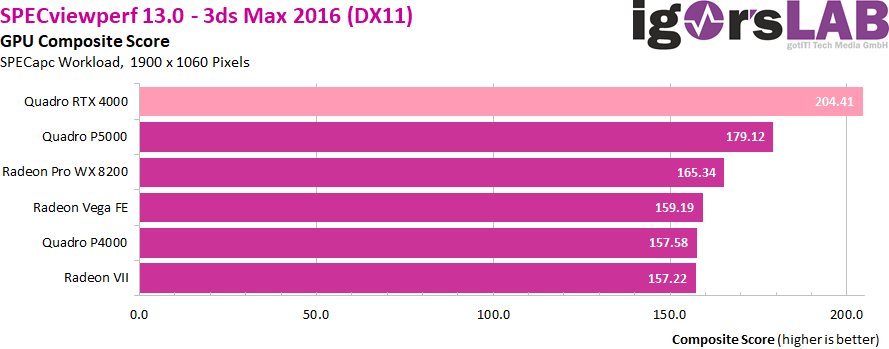
Catia V6 is now old as lignite, but doesn't really taste like the AMD cards. However, the driver effect is also missing here, where consumer cards generally draw the shortest.
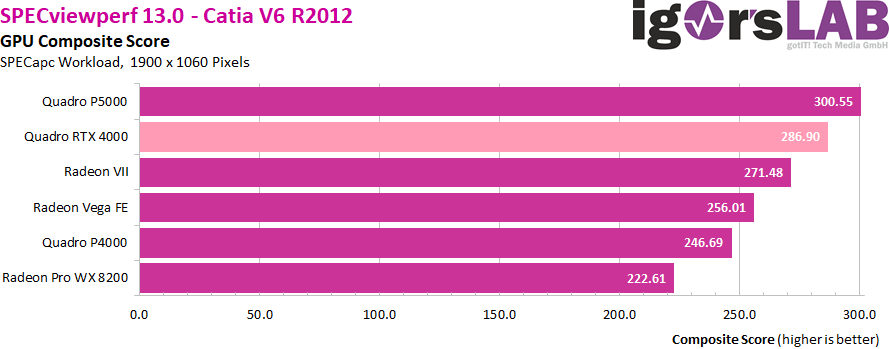
The distance in Creo 3.0 we just had, but not as pronounced as here. However, the trend is true, which could make this stand for a simple benchmark.
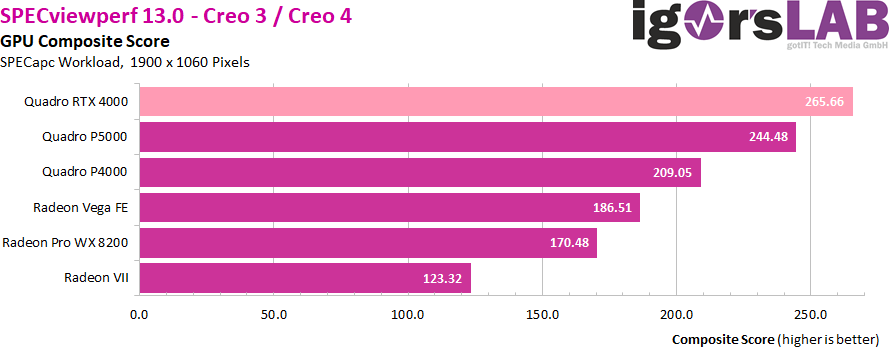
Why the AMD cards look so bad here, one would really have to question, because especially the Radeon Pro WX 8200 falls extremely behind the almost equal Vega FE and the Radeon VII, brimming with bandwidth and computing power, is even unmotivated by this Benchmark. It certainly boils down to the driver, as is so often the case.
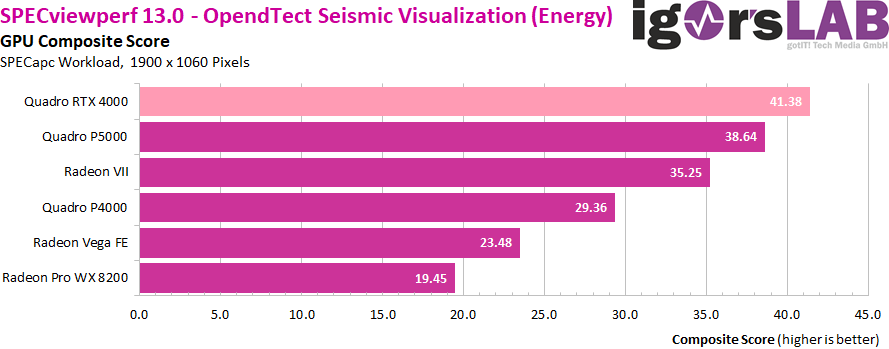
Here we see the most blatant outlier, the performance in Maya 2017 in the individual test was not so great. What the SPECviewperf is testing here obviously refers only to the Viewport, but has almost nothing to do with Maya 2017. But it's a thankful playground for optimizations.
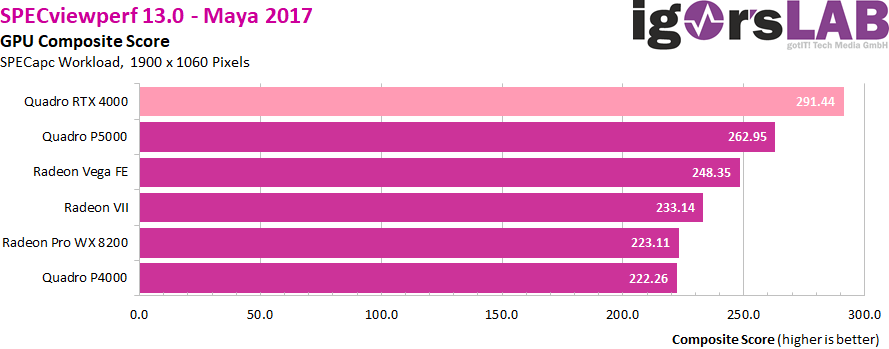
The fact that the Quadro RTX 4000 sorts itself so completely differently is surely due to the Turing architecture, which ImageVis3D is probably more likely to meet. And the thanks should also go to the driver team. However, this result cannot be completely crammed together, so that the Quadro RTX 4000 can and must be allowed this performance.
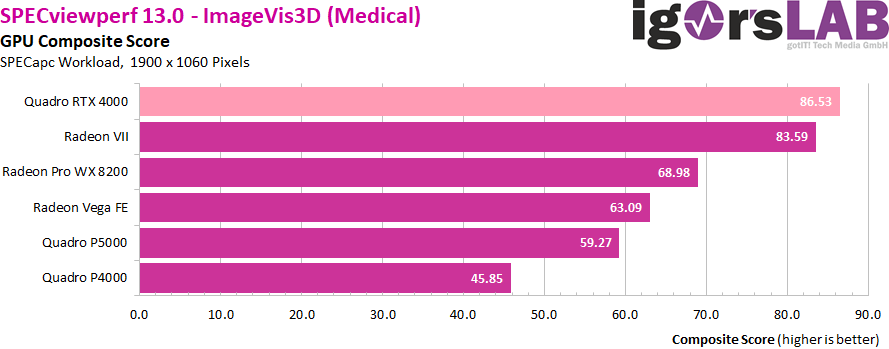
Showcase 2013 and Nvidia probably won't get really warm anymore, I've had such results before. After all, it is still right to distance the Radeon VII and the other two Quadros.
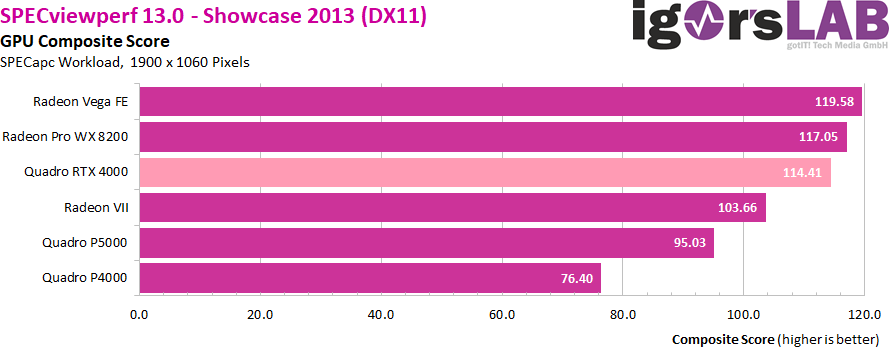
The NX8 results look somewhat real, because a short plausibility test with the SPECapc and NX 9 on a third-party system showed at least a similar tendency.
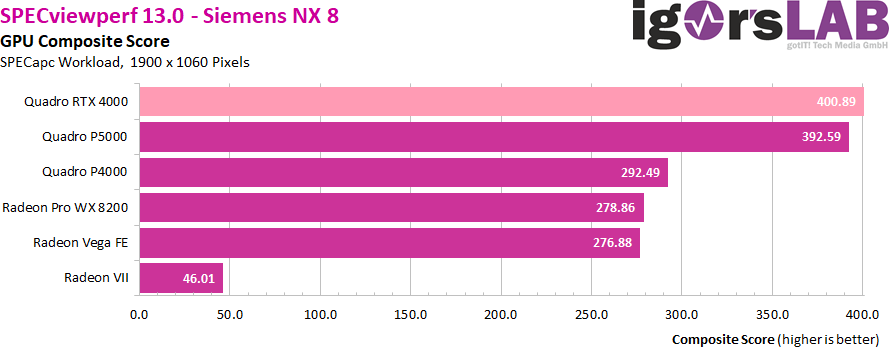
Solidworks 2013 should only be considered as a side note, because this version is no longer in focus. For this I have the newer benchmark of 2017, which gives a completely different order. so you can tick off that with confidence.
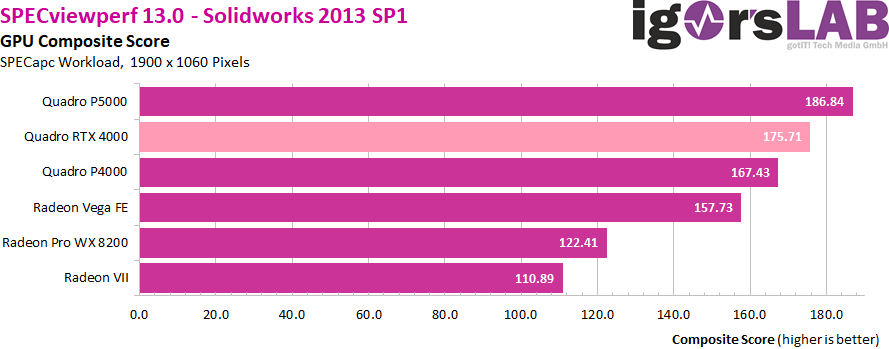
- 1 - Einführung und Datenblatt
- 2 - Tear Down: Platine und Kühler im Detail
- 3 - Visualize 2019, Arion, Luxmark
- 4 - Solidworks 2017
- 5 - Autodesk AutoCAD 2018 , Maya 2017 und 3ds Max 2015
- 6 - Creo 3 (M190)
- 7 - SPECviewperf 13
- 8 - GDI und Treiberdurchsatz
- 9 - Leistungsaufnahme, Lastspitzen und Netzteilempfehlung
- 10 - Takt und Temperaturen
- 11 - Lüfter und Lautstärke
- 12 - Zusammenfassung und Fazit

































Kommentieren